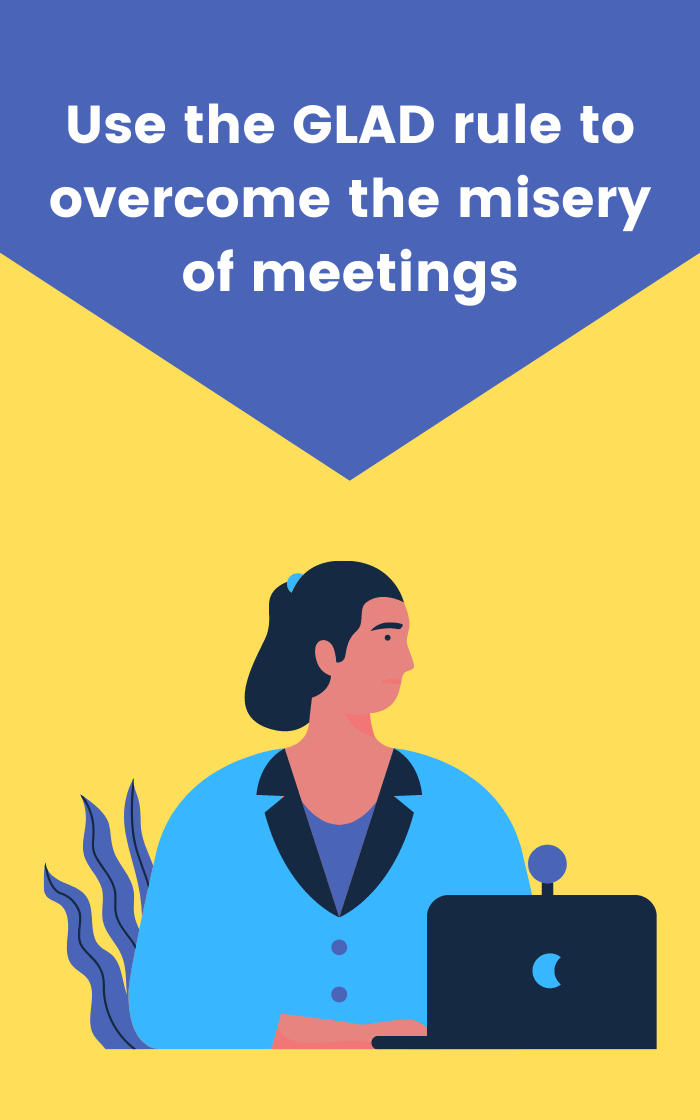Use the GLAD rule to overcome the misery of meetings

Parent Post
Meetings are a drain
Meetings are a drain and often unproductive due to poorly organized agendas, wayward oversight, and directionless conversation.
How do you fix this?
Treat each of your meetings like a presentation. The first part is the delivery of the message; the second should include a quick, time-limited Q&A and define action items.
Here’s how to keep it straight, using the “GLAD” rule.
[G]ive them what they
[G]ive them what they need to know, not everything you know.
We’re often tempted to demonstrate our knowledge or expertise by heaping on a wealth of information. But that just dilutes the main argument.
Start by asking: What does your audience need or want to know? Stick to that.
After the presentation, give
After the presentation, give attendees a set period of time to ask questions. Then set aside the last two or three minutes to determine action items.
This approach can be used in general conversation, too — not just in formal presentations. The crux of it is keeping it simple, compelling, and audience-focused.
If you make the case clear and provide an attractive benefit to action, you’ll get them hooked.
[L]ead with “you.” Your presentation
[L]ead with “you.”
Your presentation is not about you — it’s about your captive audience. So give them what they want. Talk about their needs and pain points.
Be clear about solutions that affect them. And use “you” language to underscore this effort.
If you’re still worried
If you’re still worried about presenting in front of people, here are a few quick pointers that are easy to remember:
- Instead of looking at a sweeping sea of people, focus your attention on one person in the audience for 10 seconds, and then switch to another person.
- Don’t let the “um” derail you. Take pauses between points — even between sentences, if you need them. The silence gives you a chance to breathe and collect your thoughts for the rest of your presentation.
[A]ct, and push for
[A]ct, and push for action.
Be performative — but only as far as it supports your main point. Experts have noted that 60 to 80 percent of communication comes from body language, so leverage that with gestures that emphasize your key point.
Be sure you close your presentation with a call to action.
[D]eliver details in the
[D]eliver details in the middle, the thesis at the beginning and end.
If you start with the nitty-gritty, you’ll lose your audience. Grab your audience with a hook, and then share your main thesis. After this, you can add supporting details.
Then, close with a memorable punch — give your audience the thesis one more time, packaged slightly differently so it doesn’t sound like you’re parroting yourself.

